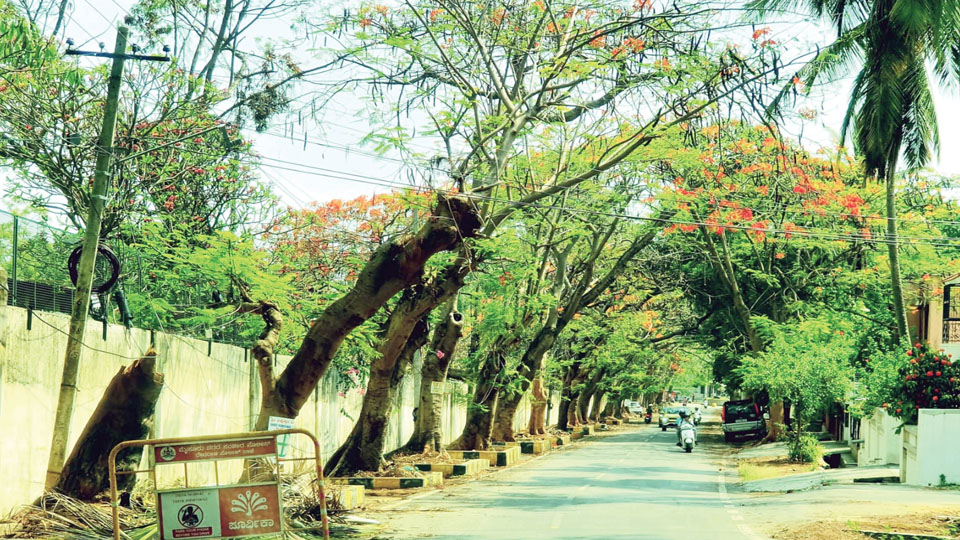By Dr. K. Javeed Nayeem, MD
After a full six weeks of desperate waiting in the sheer agony of being steeped in one of the harshest summers in recent times, our city was blessed with its first real summer rain last Friday evening. I say this because although some parts of the city experienced sporadic, half-hearted showers, lasting just for a few minutes, last week, we have never had anything worthy of being called rain this year, until two days ago.
Summer rain has always enjoyed a special status in both the rich folklore and the life-giving agrarian activities of our entire sub-continent because it heralds the arrival of the monsoon, the special gift of nature, by way of seasonal rain, which the rest of the world is not blessed with. Rain almost everywhere else, is more or less a sporadic phenomenon, without a fixed or predictable time-table.
Of all the natural phenomena that we are blessed with, rain has always been the most mesmerising to me since my childhood days. And, even today it remains the same and I do not enjoy anything else more, than getting completely drenched by walking in the rain!
Enthralling epics have been composed by our sages and bewitching ballads have been sung by our singers and musicians about the romantic influence of summer rain, not just on people but also on the birds and animals that abound in our countryside. They have in the most poetic words, described the dramatic effect that just one spell of rain has on our land, transforming it from a barren brown to a vibrant green!
The proof of this can be seen next fortnight, right here at home, when our own Chamundi Hill that is now just a dull grey mass, will transform itself into a most verdant backdrop for our city. That is the magic of rain!
But rain can sometimes cause some discomfort too. As we all saw, the rain that has just gone by, was accompanied by very strong winds and a brief hailstorm too which again is a characteristic feature of the first few rains during summer months. The gale usually wreaks havoc with our avenue trees and electric poles and wires, in a domino effect, while the hailstones, however brief, can badly damage or even ruin the standing crops in our fields. The still largely unpicked mango crop, that is so dear to every one of us and which abounds in numerous orchards surrounding our city, is particularly at risk from hailstorms.
While I am still unable to say what has happened in the fields and farms, I certainly was able to gather a first-hand impression of the scene in the city from a recce I made early yesterday morning by driving through the city. Almost everywhere, I could see fallen trees and toppled electric poles, with wires dangling dangerously around them, confining people to their houses, understandably for a good length of time to come.
The damage seems to have been the heaviest in Yadavagiri, because of it being the highest locality of the city and thus most prone to the fury of the raging winds. That entire area was completely without power, with the authorities having stated that power would be restored only by Saturday evening.
But what I could surmise from what I saw, was that a good amount of this rain damage could have been prevented with a little foresight and planning. It usually is that way, every year. Most of the electric poles come down only because their wires are tugged down by falling trees, while most of the trees that fall, do so because they would have become infirm due to age and also due to damage inflicted on them by termites.
If only such trees are identified well in advance before the onset of the monsoon, with the help of joint surveillance teams of the City Corporation and the Forest Department, much corrective action can be taken to avoid mishaps. But sadly, as we have been clearly seeing year after year, this is never done and the result is what we see clearly and predictably, year after year.
We are told that in the days of our erstwhile Maharajas, not very long ago, there used to be a separate cadre of white-coated and turbaned ‘Avenue Tree Officers’ whose job was to go round the city on their bicycles, inspecting our roadside trees and then submit reports of where trees were needed to provide shelter to road using citizens and which weak trees were to be removed to keep them safe. They would also decide on the choice of the most appropriate species of trees, based on the width of the roads that needed them.
It appears they were also tasked with the additional responsibility of reporting the presence of potholes and other hazards on the roads, so that appropriate remedial action could be taken promptly. But all this is sadly a thing of the past and the sadder still part is that we are left wondering why this simple practice cannot be reintroduced in the present era.
Today, our authorities have all the means by way of equipment, man-power and funds from collected taxes, to make our lives comfortable and safe and yet nothing is done on a regular basis with some degree of responsibility and sensitivity. It is only when a mishap occurs, causing public outrage, that they swing into action, for just a brief while as a mere eyewash, till the proverbially short public memory comes to their rescue!
Added to this, they take shelter under vague pretexts for not acting. For instance, just a couple of months ago, when Reginald Platel, my schoolmate and a fantastic cricket player, lost his life most tragically on one of our roads due to a falling branch from a long dead avenue tree, the excuse advanced by our City Corporation authorities for having left that tree unattended was that they could not remove it due to pressure from environmentalists. And, the reason they always give for not removing living but infirm and potentially dangerous avenue trees, is that our forest laws are very strict, requiring very elaborate bureaucratic clearance before they can be dealt with. All this seems more like the result of a lack of will rather than a lack of legitimate solutions to a problem that can otherwise be resolved quite easily.
Can we not enact appropriate legislation or interpret existing laws to make sense about how our civic authorities can deal with danger-posing roadside trees, to protect the lives of tax-paying citizens? And, can anyone be expected to believe that any environmentalist worth his or her salt, however committed and enthusiastic, would be hugging completely dead trees, to save them from being chopped?
e-mail: [email protected]








Recent Comments